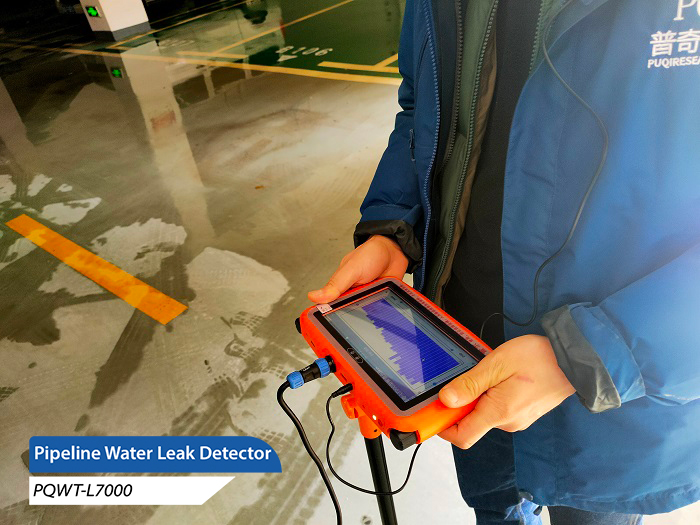In modern society, the safety and stability of water supply pipeline systems are crucial for the daily operation of cities. However, due to various reasons such as material aging, improper construction, or external damage, water supply pipelines often experience leakage. This not only leads to the waste of water resources, but may also cause pollution to the surrounding environment, and even affect the normal life of residents. Therefore, timely detection and repair of water supply pipeline leaks have become an indispensable part of urban management.

Among numerous leak detection methods for water supply pipelines, the pqwt water detector listening method has become the most commonly used method on the market due to its high efficiency and accuracy. This method captures the sound wave signal generated by the leakage water, locates and evaluates the leakage point, and provides important basis for subsequent maintenance work.
1、 The generation and propagation of water leakage sound waves
When the water supply pipeline is damaged and leaks under a certain pressure, water will escape from the damaged point at a certain speed due to the pressure difference inside and outside the pipeline. This process is not silent, and the escaping water will generate two mechanical motion processes:
Due to the viscosity and initial velocity of water, it rubs against the pipe wall, causing vibration.
These vibrations propagate in wave form along the pipeline to both sides, forming what we call leakage sound waves.
From the perspective of wave theory, these leakage sound waves belong to linear waves, and their sound source is the leakage point. Sound energy, also known as sound intensity, will decay exponentially during propagation. The attenuation coefficient is closely related to the elastic modulus of the propagation medium, the magnitude of water pressure, and the frequency of sound waves.
2、 The working principle of PQWT water detector listening method
The PQWT water detector listening method works based on the above principles. It uses professional listening equipment to capture and amplify the sound wave signals generated by leaks. By analyzing and processing these signals, it can accurately determine the location and degree of the leakage point.
In practical applications, inspectors usually arrange multiple listening points on the pipeline and use listening equipment to inspect the pipeline one by one. When the device detects an abnormal sound wave signal at a certain point, it can determine that there may be a leakage point near that point. Subsequently, the testing personnel will further narrow down the scope and accurately locate the specific location of the leakage point, providing accurate basis for subsequent maintenance work.
3、 The advantages of PQWT water detector listening method
The reason why PQWT water detector listening method has become the most commonly used method for water supply pipeline leakage detection is mainly reflected in the following aspects:
1. Efficiency: By capturing and analyzing acoustic signals, leakage points can be quickly located, greatly improving detection efficiency.
2. Accuracy: Based on the physical principle of sound wave propagation, the detection results are more accurate and reliable, avoiding the occurrence of misjudgments and omissions.
3. Safety: No need for large-scale excavation and testing of pipelines, reducing safety risks and interference with the surrounding environment.
4. Wide applicability: Suitable for various materials and specifications of water supply pipeline systems, with a wide range of applicability.
4、 Summary
The PQWT water detector listening method, as an efficient and accurate leak detection method for water supply pipelines, plays an important role in urban management. It can not only detect and repair water supply pipeline leaks in a timely manner, but also reduce the waste of water resources and environmental pollution risks, ensuring the safety of urban water supply. With the continuous progress of technology and the continuous improvement of detection technology, it is believed that more efficient and accurate leak detection methods will be introduced in the future to safeguard the safety of urban water supply.








